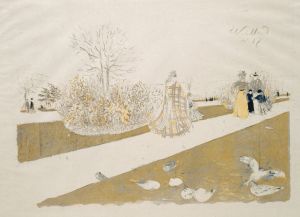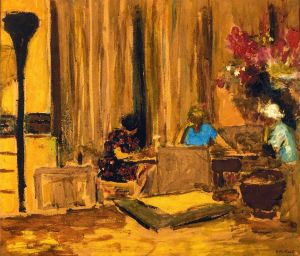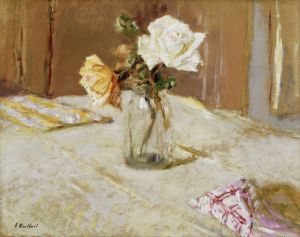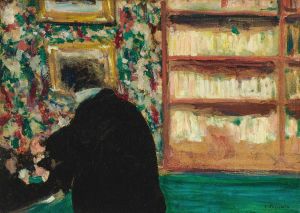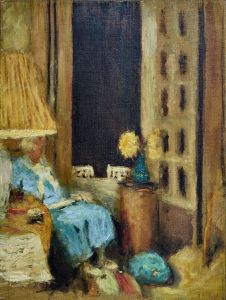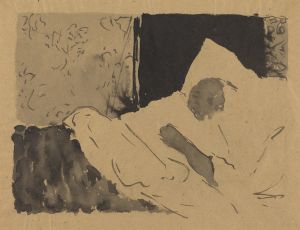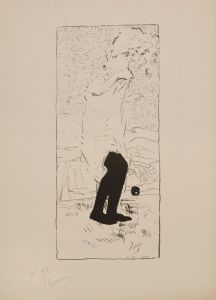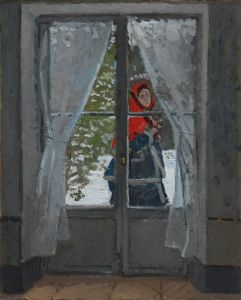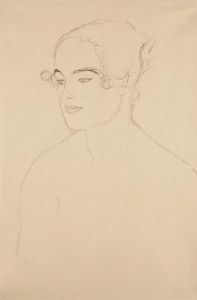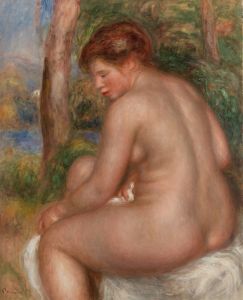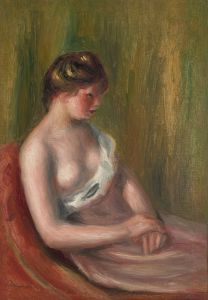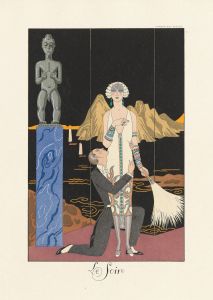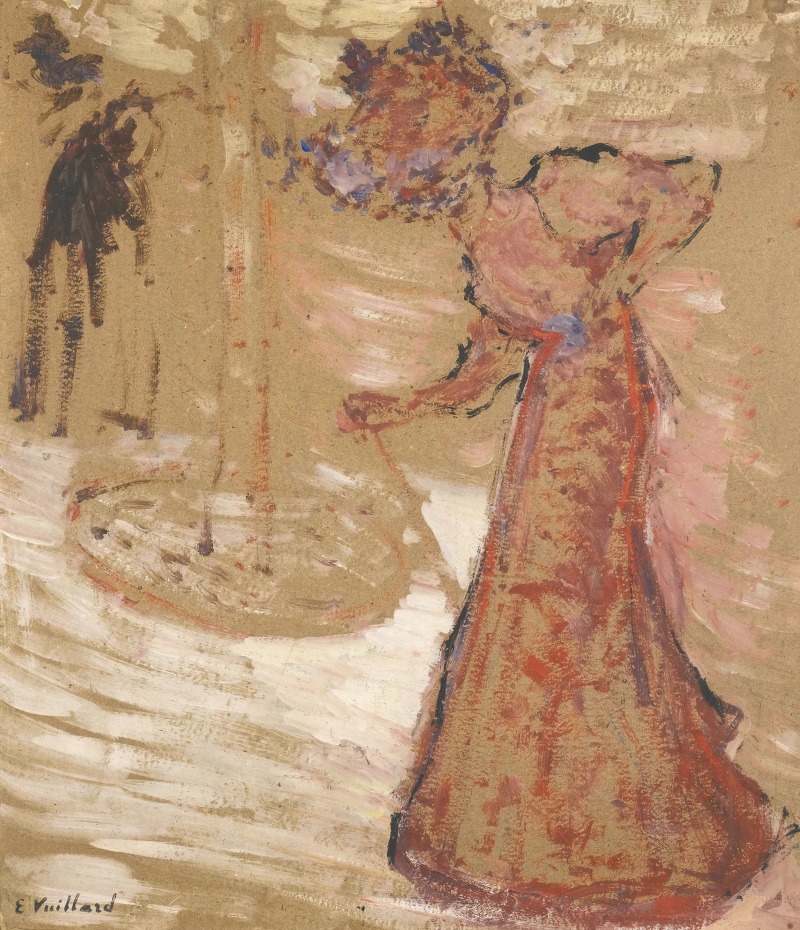
La Femme au jardin public
A hand-painted replica of Édouard Vuillard’s masterpiece La Femme au jardin public, meticulously crafted by professional artists to capture the true essence of the original. Each piece is created with museum-quality canvas and rare mineral pigments, carefully painted by experienced artists with delicate brushstrokes and rich, layered colors to perfectly recreate the texture of the original artwork. Unlike machine-printed reproductions, this hand-painted version brings the painting to life, infused with the artist’s emotions and skill in every stroke. Whether for personal collection or home decoration, it instantly elevates the artistic atmosphere of any space.
Édouard Vuillard, a prominent French painter associated with the Nabi movement, created "La Femme au jardin public" (The Woman in the Public Garden) during a period marked by his exploration of intimate domestic scenes and the interplay of patterns and colors. Vuillard, born in 1868, was deeply influenced by the Symbolist movement and the works of Paul Gauguin, which led him to join Les Nabis, a group of avant-garde artists who sought to redefine painting in the late 19th century.
Vuillard's work is characterized by its focus on the private and the everyday, often depicting scenes of domestic life and interiors. "La Femme au jardin public" is a testament to his ability to capture the subtle nuances of human presence within a space. The painting reflects Vuillard's interest in the relationship between figures and their environments, a theme prevalent in his oeuvre.
In "La Femme au jardin public," Vuillard employs a muted palette, a hallmark of his style, to create a serene and contemplative atmosphere. The composition is carefully structured, with the figure of the woman integrated into the surrounding garden setting. Vuillard's use of color and pattern is deliberate, creating a harmonious balance between the figure and the background. This technique reflects his interest in Japanese prints and the decorative arts, which influenced his approach to composition and color.
Vuillard's technique often involved the use of distemper, a type of paint made by mixing pigments with a binding agent such as glue. This medium allowed him to achieve a matte finish and subtle gradations of color, enhancing the intimate quality of his work. In "La Femme au jardin public," the use of distemper contributes to the painting's soft, dreamlike quality, inviting viewers to engage with the scene on a personal level.
The setting of a public garden is significant, as it represents a space where the private and public spheres intersect. Vuillard's depiction of a solitary woman in this setting suggests themes of introspection and solitude, common in his work. The garden, a recurring motif in Vuillard's paintings, serves as a backdrop that blurs the boundaries between nature and the constructed environment, reflecting the artist's interest in the interplay between human figures and their surroundings.
Vuillard's work, including "La Femme au jardin public," is often associated with the concept of "intimism," a term used to describe art that focuses on intimate, everyday scenes. This approach is evident in the way Vuillard captures the quiet moments of life, imbuing them with a sense of depth and meaning. His paintings invite viewers to pause and reflect on the beauty of the ordinary, a quality that has contributed to his enduring legacy in the art world.
Throughout his career, Vuillard remained committed to exploring the nuances of human experience through his art. "La Femme au jardin public" exemplifies his ability to convey emotion and atmosphere through subtle details and a refined use of color and composition. As a member of the Nabi movement, Vuillard played a crucial role in the transition from traditional academic painting to more modern, expressive forms, influencing subsequent generations of artists.
Vuillard's work continues to be celebrated for its unique blend of realism and abstraction, as well as its ability to capture the essence of everyday life. "La Femme au jardin public" stands as a testament to his skill as a painter and his deep understanding of the human condition, offering viewers a glimpse into the quiet beauty of a moment suspended in time.





